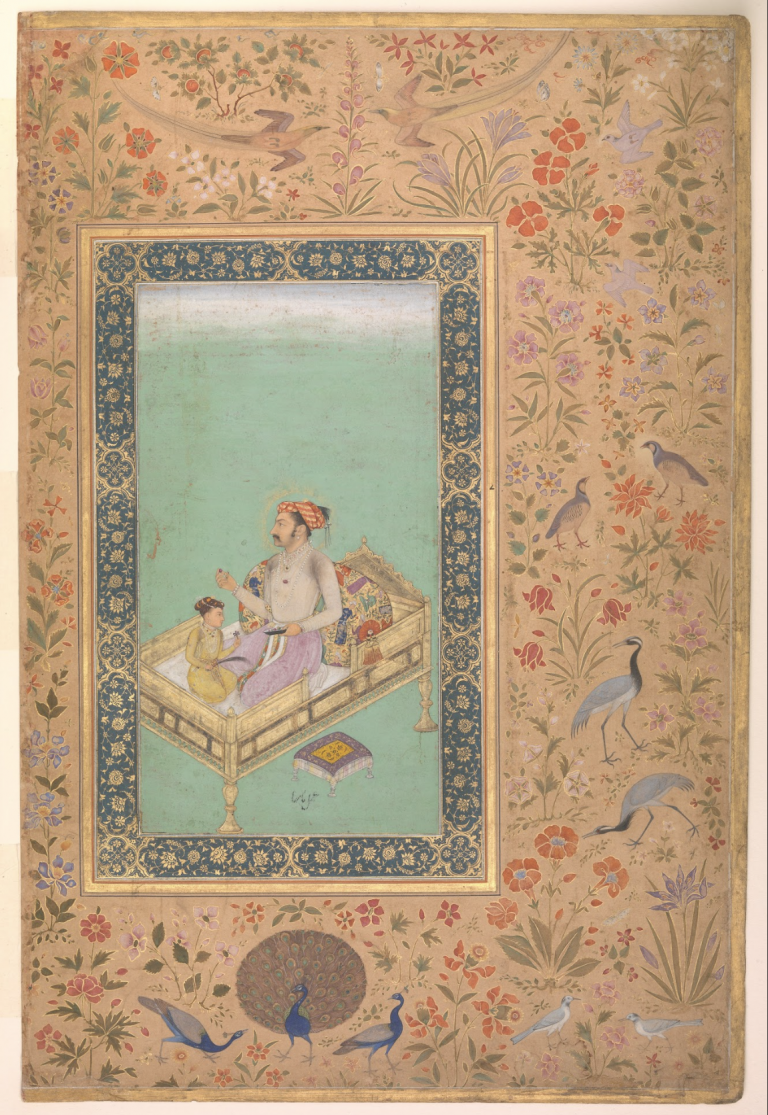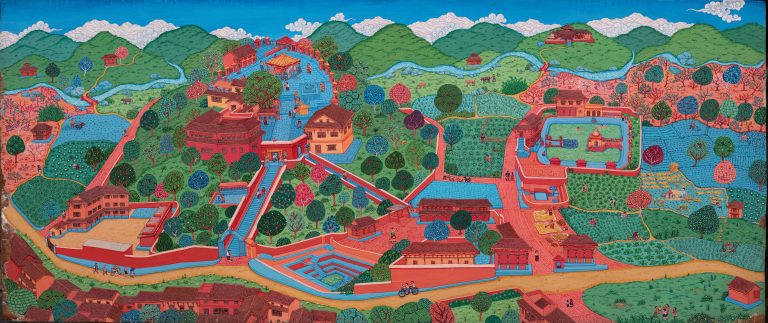Introduction text by Beth Citron
While the convergence of filmmaking and a gallery-based art world in India appears as a cutting-edge and recent phenomenon, it was leading artists in the mid-late 1960s who pioneered the trend. MF Husain, Akbar Padamsee, and Tyeb Mehta – serious painters who experimented in alternative methods and media – had practices that briefly but substantially incorporated film. For Mehta, it marked a return to what had been his primary interest before Partition violence in Bombay prevented him from traveling to a distantly located job as a film editor’s assistant, which then sparked his choice to study painting at the nearby J.J. School of Art. Some twenty years later, as an established artist who had recently returned to India from a year in New York on a Rockefeller Fellowship, Mehta produced the sixteen-minute experimental film Koodal(which means “union” or “meeting point” in Tamil) in 1969-70. Around the same moment, Mehta began exploration of the Diagonal as a form and subject of his painting. Indeed, the catalogue accompanying Mehta’s solo exhibition at Gallery Chemould in 1971 celebrates his work in both mediums, and a note by Mehta’s friend and artist colleague Krishen Khanna poignantly connects the Diagonal series with Koodal, even as the film was developed independently and not shown as “art” within the gallery space at that time. Khanna’s writing reflects artists’ sensitive discernments of the relationships and interdependency of different mediums, several decades before the art world – not just galleries, but also criticism, scholarship, and museum programming – would work towards more inclusive models of modern and contemporary art histories and theories.

Khanna’s note is an important and self-standing achievement in writing on Mehta, and more broadly, on Indian modernist art. Beyond the writing, the format of the catalogue, including the existentialist epigraph by Albert Camus that declares the centrality of balancing form and subject, as well as the selection and layout of images chosen for publication, attest to a decisive and important moment in Mehta’s career. Significantly, the cover of the catalogue features The Diagonal No. 1 (1969), an oil on canvas painting which was, for many years, hidden in plain sight within the expanse of Mumbai’s Tata Institute for Fundamental Research (TIFR). The work held at TIFR had been cast off by observers as an early (and not especially sophisticated) copy of Mehta’s work, until recent research confirmed that the work was in fact painted by him. Further, contextual analysis reveals it as an important transitional painting on which Mehta’s development in the early 1970s hinged. The integration of simplified human and sinewy animal parts into a composite image reflects the process of Mehta reintroducing the figure into his work after a brief flirtation with abstraction. (His moment of abstraction can be seen especially in the ambiguous trussed bull form and reduced formalist composition of the well-known canvas The Diagonal No. 3 (1969), which is also held at the TIFR and is printed in the 1971 Chemould catalogue on the facing pages of Khanna’s note.) The experimental stylistic hybridity of The Diagonal No. 1 marks a transition from the expressionist idiom Mehta engaged throughout the 1960s to the planar restraint of his mature career work in the 1970s and beyond. That the cover of an exhibition catalogue often highlights one of the major works from a new series further indicates that this painting had been a significant work at the time of its exhibition. And, moreover, Mehta’s titling the canvas No. 1, even as it may not have been the first work painted in the set, testifies to its importance, to the idea that the work is inaugural.

The catalogue dedicates a page to Koodal, presenting three still images – of a bull, the application of heavy makeup, and a kabaddi game, along with a poetic description which makes note of many of the film’s fifty or so interconnected sequences. In returning to film after a gap of twenty years, Mehta integrates into Koodal many visual and thematic concerns from his painting practice. Indeed, the film represents tropes recurring in Mehta’s paintings (including the trussed bull), and highlights the formal element of the diagonal, for example, in a sequence of a busy Bombay street crossing and in an exceptional scene that replays historical footage from Gandhi’s funeral procession. The violence Mehta witnessed at Partition became a structuring element of his painting practice, and its residue is potent and visible in Koodal’s many sequences alternating frenzy or aggression (scenes of self-flagellation) with lifelessness (including eerie shots of the Bandra slaughterhouse). The extraordinary penultimate scene of Gandhi’s funeral procession – described as “disorderly crowd – march/the funeral procession of Mahatma/ black” – is a culmination of all preceding moments, and reflects the personal and national scission at the core of Mehta’s artistic practice and person. This is especially so when remembering Gandhi’s forceful opposition to Partition and his famous dictum that “they would have to cut my body into two.” Indeed, this scene and the position of the film complement and balance the transition and process seen in Mehta’s painting, and are integral our under- standing of his pivotal work of 1969 and 1970.
Krishen Khanna: Exhibition Catalogue of Tyeb Mehta, Gallery Chemould
Bombay, 1971
“I know of only one revolution in art, it belongs to all ages, and consists of the exact adjustment of form to subject matter, of language to theme.” ~ Albert Camus
KOODAL
grey – slight movement – a flicker – underneath row of human bodies, pressed one against another – lie asleepheads piled vertically – smoke from the dust bin – the animated eye – environment –plate of rice – people move in closed street – the circular movement – loss of identity – caught in inactive situation – helpless – unaware group of people, mostly children and elders watch the mating of bull & cow. flight of birds – bull – relax – ruminating – suddenly the resistance – as if someone has tied its legs – metamorphosis of fear – the pull – the friction – struggle to make loose – the thud – then bleeding – agony – silence-the carcass-meat in the shop- the flagellation – the dance- women in the windows- eunuch-the gesture of vulgarity, the gesture without meaning, disorderly crowd-march-the funeral procession of Mahatma-black-inside temple-idols – palanquin-the procession-the ritual-marriage of Shiva – Parvati late night – burning oil the home of Gods-guarded by Nandi.
Figures deprived and in pain haunt the canvas. The trussed and helpless bull of twenty years ago undergoes several metamorphoses in paint. A powerful subject matter, capable of waylaying the spectator – essentially of Tyeb’s choosing from a common environment, is a necessity though not by itself enough to create a work of art. The content becomes formal and subjected to the elements both on the canvas, and in the film, Koodal, recently made for Film Divisions. A still architectonsic image speaking clearly of itself and invoking all its associations moves to a point where the image yields partly to paint as if it were gesticulated by it, binding it inextricably to the field and the matter of it’s creation much in the way as we human beings are bound to the matter we are created in.
These paintings have to be looked at. Their primary appeal is not sensual but senses are employed to reach the thinking mind and to the realisation that a concept is at work which is capable of yielding such a bountiful multiplication of forms. To impose doctrinaire ideologies, or to argue that the figurative element is at variance with the interplay of the purely formal is to desire imagined purity evading the confrontation which these works demand. They do not readily give themselves up but insist on a dialogue on their own terms. To demand an extreme position either way is to demand a complete change in the pictorial proposition which is another way of saying “I can see you”. That remains the viewer’s problem.
No one could fail to notice the deliberate use of the element that runs through each painting. In the large black painting the red diagonal is at once an independent red form floating on a dark mass and a determinator of the canvas holding the black left hand corner in its position. The trussed bull in the bottom right hand corner is subdued both in color and in the position it occupies, thereby containing the onslaught of black. While the diagonal strikes the lower it does not reach the top edge of the canvas stopping at the boundary of the black and the beige-creating “a pictorial edge”.
This concern for the picture plane (the diagonal in the paintings has four sides, sometimes more) is seen to operate in his film in shots such as the one where a crowd rushes towards the viewer but is halted by the lower edge of the screen while the remaining frame is filled by the swelling crowd. In the film, the element of movement involving Time performs the equivalent function of creating a plane which determines the other spaces. In another painting the diagonal runs through a figure, each edge of it pushing the adjacent half of the figure in the opposite direction. The outward movement is resisted by our knowledge and sense of the figure which forces us to rejoin it. Similarly in the film, each environment is portrayed distinctly demanding the viewer’s involvement formal or otherwise, to accept them as part of the same movement and structure.
The two media being different it would have been suicidal to transplant one on top of the other. The paintings are singularly bereft of any environment whereas the film is full of it. In the paintings, the use of formal elements and most recently the use of diagonal is instrumental in creating different planes on the flat surface of the canvas. Their interaction is managed through the use of color, which necessarily has to be, in this case non harmonic and atonal. There is a directed attempt at discovering every nuance which the imagery requires in painting, the interplay of the figure with the formal elements, in the film, the interplay of the main subjects with their related environments.
There are multiple levels at which the film functions simultaneously. One could see it simply as a series of transmutations of life forces. The young bull reduced to a carcass for the meat trade, the eunuch transformed into a mask culminating in a ritualised gesture of vulgarity, the folk dancer flagellating himself for the amusement of others and making a stylised demand for cash, even the gods removed from their abstract heights and made to accept our rituals of marriage. Or again, the impersonality of a crowd which winds like a serpent and suddenly gains identity. Whilst a single individual walking around a square becomes anonymous. One could see it only as a deployment of elements – motion of the camera working with the movement of the subject – an almost independent sound track which reinforces the visuals. One could even think of Koodalas a message of non – violence. Whichever way one may choose to view the film or look at the paintings the fact remains that all these are diverse strands in a single fabric and that in it is not a small achievement.













